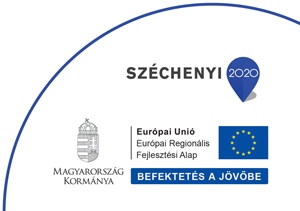Name of beneficiary
- Neumann Medical Ltd.
- Semmelweis University
- SENSO-MEDIA Fejlesztő és Szolgáltató Plc.
Project title
AI driven automated spinal fracture decision support platform and National Spinal Fracture Register (GENERE) development
Total grant amount for consortium
922 639 096 Ft
Rate of support (percentage)
72,45 %
Project launch date
01/01/2021
Planned project end-date
09/30/2023
Full name
Neumann Medical Ltd.
Company registration number
01-09-694439
Tax number
12602128-2-42
Location
Baross utca 34. 2/2, 1085 Budapest, Hungary
Project ID number
GINOP-2.2.1-18-2020-00029
| Name of beneficiary | Project total cost | Self-effort | Grant amount | Rate of Support |
|---|---|---|---|---|
| Neumann Medical Kft. | 589 120 961 Ft | 153 357 633 Ft | 435 763 328 Ft | 73,97 % |
| Semmelweis Egyetem | 234 447 374 Ft | 0 Ft | 234 447 374 Ft | 100,00% |
| Senso-Media Zrt. | 449 876 760 Ft | 197 448 366 Ft | 252 428 394 Ft | 56,11% |
| Summary: | 1 273 445 095 Ft | 350 805 999 Ft | 922 639 096 Ft | 72,45 % |
Project Summary
The project creates an AI-supported, automated decision support system aiming to aid the fast and effective diagnosis of spine fracture throughout Hungary. The consortia realizing the project develops a complex data collection system that creates a database of annotated spine X-ray, MRI, and CT images ready to be used to train AI. The newly created AI platform allows future development of algorithms utilizing the ever-growing set of data to improve diagnostics. The whole system shall create a unique service allowing for individual hospitals to upload images. The central AI algorithm analyses all images and provides feedback on the severity and complexity of the cases. This „real-time” triage will sort cases and provide valuable support for quicker diagnosis and better treatment. By increasing the participating institutes’ number and the uploaded images the system will improve its own sensitivity and accuracy. We expect to improve the diagnosis of spine fracture, treatment of patients, and reduce rehabilitation time while simultaneously decreasing doctors’ workload.

